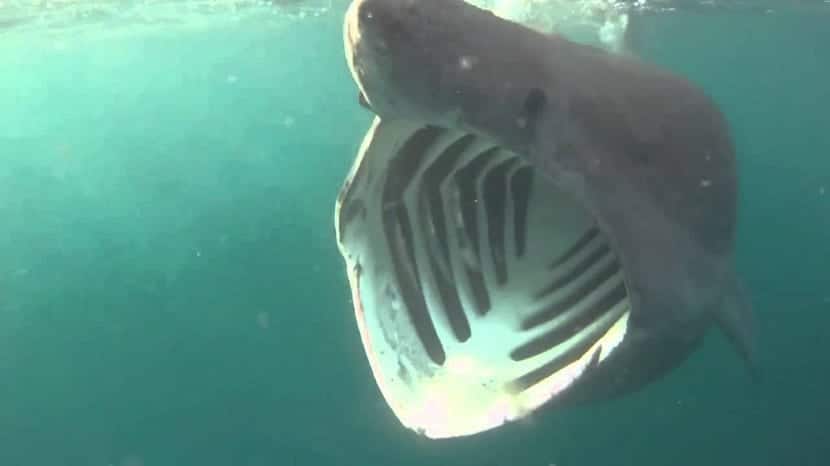
Today we are going to talk about a somewhat strange species of shark. Its about basking shark. Its scientific name is Cetorhinus maximus and it is considered the second largest fish in the world. It is capable of reaching 10 meters in length and up to 4 tons in weight. It has an impressive silhouette that makes it a hunting shark and a sharp snout. It is well known to people who like the sea.
In this article we are going to tell you everything about the basking shark, from what characteristics it has to how it reproduces.
Key features
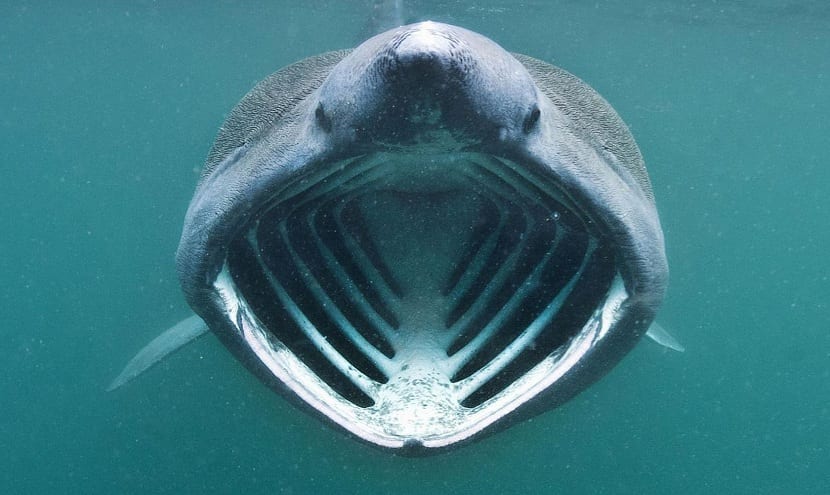
It has an ideal hydrodynamic shape although it moves slowly. Its sharp snout helps it feed by filtering the water. It usually swims with its mouth open to be able to make it round and filter the water through the gills.
Normally, they are seen from the coast and tourists often ask how they can see them. On the surface they are frequently seen and tolerant to the presence of humans. Although its appearance may be shocking, it is not dangerous at all. If you go on an onshore boat, the shark will surely come to you to browse, but without hurting you.
This behavior so kind to human beings makes it the object of indiscriminate hunting by fishermen. The size and weight that it has has served them to have a high profitability in commercial ships. Only a shark is capable of generating a ton of meat and 400 liters of oil. The liver is very rich in vitamins and can represent up to 25% of the total weight of the animal.
The persecution that this animal has had in the past has caused its populations to be reduced to the point that many current populations are protected by law in a large majority of countries.
Habitat and area of distribution

The basking shark can be found in pelagic areas, so we can see it frequently in coastal areas. Its distribution area is very wide, so practically all over the world. From the most polar areas to the tropical oceans. They have the ability to adapt to different environments.
They can be seen on the surfaces of the continental shelves. Although they prefer cold waters, they tend to live in areas with temperatures between 8 and 14 degrees. It is usually seen in closer areas and the coasts and it is usual that they can reach the areas of bays and ports.
They seek food in large concentrations of plankton in shallow waters. It is more common to see them swimming near the surface. This type of shark has certain migratory patterns. They are capable of traveling enormous distances in the ocean and they do so by following the changes of the seasons to always be at the right temperature.
In winter they spend long periods near the seabed to look for food, since there is little else on the surface. It is capable of going down to a hundred or thousands of meters deep.
Basking shark feeding
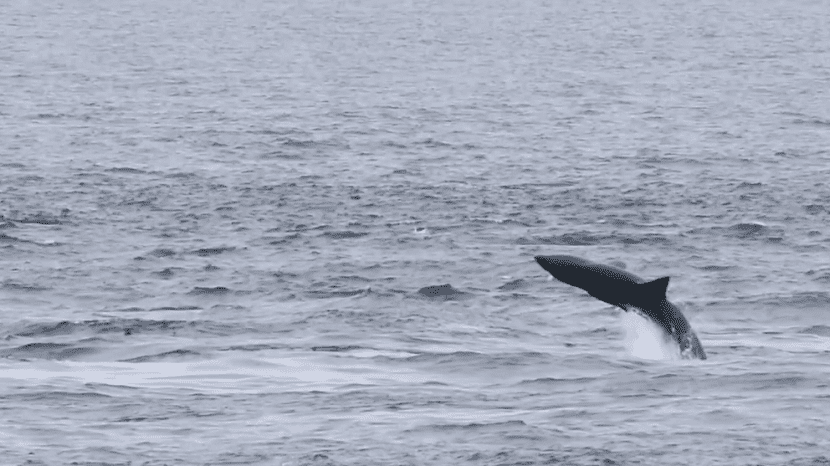
Although because of their size and apparent and dark shape they seem to eat other animals such as seals and other fish, this is not the case. Despite its fearsome appearance, it has a favorite food source. It is about zooplankton. Zooplankton are small animals that are found near the surface of the water. They are aquatic creatures and bad swimmers, so they are easily catchable.
As surface zooplankton become scarcer in winter, the basking shark must migrate to lower depths to find food or travel thousands of kilometers to find food.
Surely you are wondering how this animal does to be able to separate the plankton from the water it swallows. This process does it in an interesting way and it is thanks to certain physical characteristics. It has gill rakers that are long and thin rakes that serve to filter the plankton from the water. These rakes are absolutely necessary for feeding. The excess water they consume is expelled through the body through vertical slits.
The gills of these animals work so hard that they must be replaced annually. They are normally discarded during the winter months and come out again in the spring when there is more plankton to filter in the areas near the surface.
Reproduction
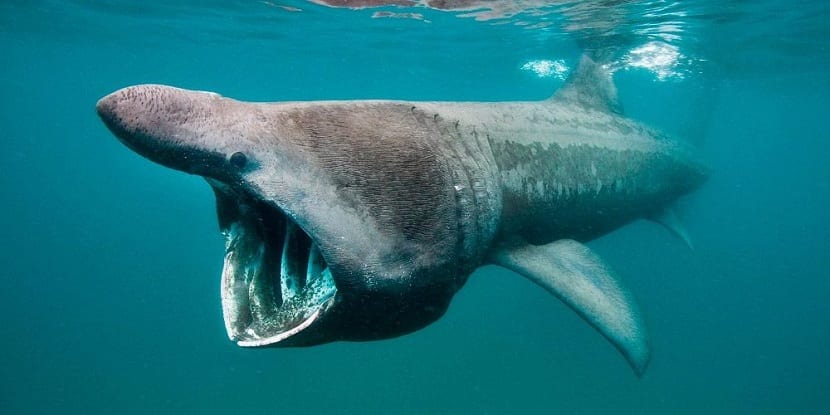
These animals they reach sexual maturity when they reach approximately 10 years of age. Before they do not try to reproduce since they do not yet have enough maturity in the organs to have offspring. The type of reproduction they have is ovoviviparous. This means that, although the young hatch from eggs, they do so from the mother's womb. These eggs will hatch inside the female until embryos are formed and fully formed.
The preferred part of shark breeding is when summer begins with a one-year management duration. At the moment, neither the ecosystem is to their liking nor does it favor them to have the little creatures. Therefore, they are capable of being able to extend the gestation time up to 3 years. This ability to survive gives them the advantage of being able to choose when is the most ideal time for the young to have the greatest reproductive success.
Basking shark behavior
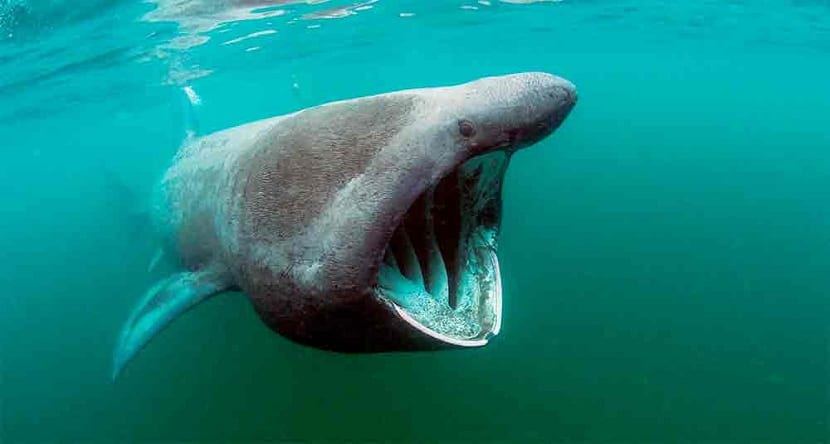
Regarding the behavior of this animal, we can say that it loves to swim in areas close to the surface of the coast due to the fact that it is where there are more nutrients and more amount of zooplankton it can ingest. The temperature at which both the water and the outside are it is a determining factor of whether or not it can be on the surface longer or has to migrate to the depths.
It is a fairly sociable animal that tends to create groups of up to 100 specimens and they do nothing to the human being. He is able to communicate with his colleagues visually just by moving his eyes to the sides. These help them to know if predators, boats, etc. are coming.
I hope that with this information you can learn more about the basking shark and everything that surrounds it.